|
|
Expedition
Expedition | People
|
Log - August-13-2003
by Gerhard Behrens
Previous | Next
Is There Life Down Under? You Bet
Gerhard Behrens |
| On August 9, I wrote about animal and plant life Baffin Bay, Greenland, and Ellesmere Island, even though I had not been lucky enough to see much of it. |
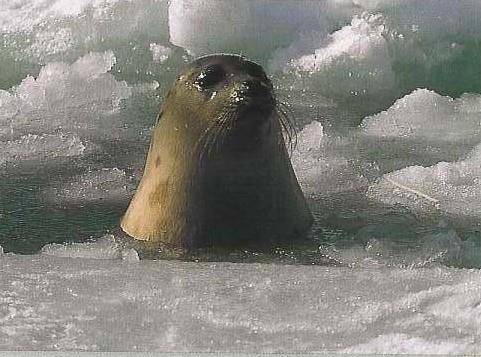
Seals come up in ice cracks for a breath. |
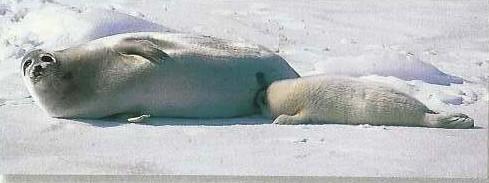
Seals nurse for 2-7 weeks. Then they’re on their own. |
How about in the waters underneath me? Again, I am surprised that I have not seen more life in the water or on the ice. The mammals of the Arctic waters are fascinating and plentiful. They are out there, even if I’m not having much luck seeing them. |
| I have seen a few black dots on the ice. And a few cute, black eyes stared back at me when I was on the small boat. So, I can claim to have seen seals. Seven kinds of seal live in the Arctic: harp, ringed, bearded, gray, hooded, ribbon, spotted. They are in the family of animals called “pinnipeds:” pinni means feather or wing; ped means foot. They live at the edges of the solid ice packs. Why? Because that’s where they can find food: fish, shrimp, and squid. Also, because that’s where the cracks (leads) of open ice form: they have to be able to come up and get air. Finally, living on the edge means they can quickly escape from its predator, the polar bear. Baby seals are born in late winter. Some are born right on the ice edge, others are born in lairs, or little tunnels, near the edge. Mothers leave their babies after nursing, between 2-7 weeks. The seal’s “grown up life” begins early! |

Walruses use their tusks to climb on to the ice. |
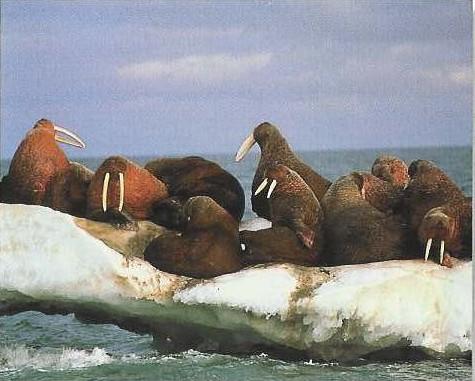
Walruses are social mammals. |
Another pinniped is the walrus. It is most famous for those big tusks. They are used to climb up onto the ice and to battle other walruses. It is also famous for its thick skin to keep it warm. Walruses are nomadic swimmers, searching for food and sleeping while they swim or float. The walrus actually stays warmer this way because the ocean temperature (0-1°C) is usually higher than the air temperature (down to -40°C). Being a bottom feeder, clams are its favorite, but it will also eat fish, shrimp, or worms that it finds at the sea floor. Walruses nurse their young for up to 2 years and love hanging out in groups, from a half dozen to hundreds! |
| Whales love the Arctic. Some migrate here in the summer to eat, and then spend the winter in warmer, sunnier places (beluga, bowhead, gray, humpback, right whale sei, sperm). Others spend their lives cruising these cold waters (bowhead and narwhal). Some have teeth, so they eat small fish and squid (sperm, beluga, narwhal). The toothed whales have only one blowhole. The other kinds of whales have baleen, which is long rows of plates like fingernails, and bristles like hairs. Baleen whales takes huge gulps of water, or sea bottom, and use the baleen to separate the water from the food. Amazingly, these immense animals eat tiny, tiny food: plankton, zooplankton, and krill. These baleen whales have two blowholes. Like walruses, whales are very social: they travel in groups (pods) and talk to each other with a variety of noises. Whales, too, take care of their young for up to two years, forming a strong bond with their child. |
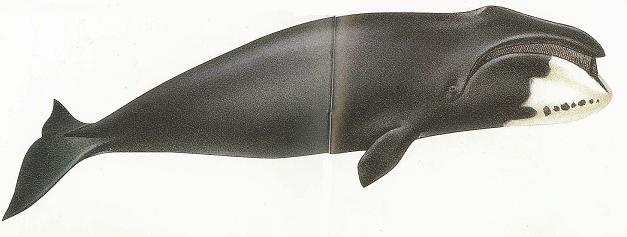
The bowhead is a baleen whale. Check out its bristle mouth. |
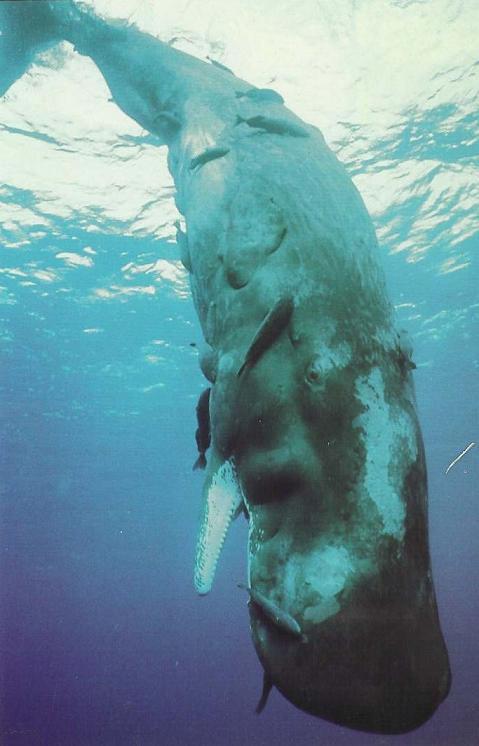
The sperm whale is a toothed whale. |
You might have asked, what is a narwhal? Barry Lopez, an author about the Arctic, says, “We know more about the rings of Saturn than we do about the narwhal.” A toothed, non-migrating whale, the narwhal lives underwater in the polar ice. That makes it hard to study and observe. It is an expert at finding openings to get a breath. It’s like a toothed whale in most ways except for “the tooth.” A unicorn whale: that’s your first thought. Only males grow this tooth (tusk), and it is used both to show off and to fight other males. |
| At the top of the food chain in the Arctic is the orca. It is looking for fish, squid, birds, seals, and whales. Either alone or in packs, it can swim up to 50 kilometers per hour (30mph) in pursuit of a meal. Like a bat, it uses echolocation to find out what’s in front of it, and then tracks it down. Best known as a killer whale, this beautiful animal lives in a group, also called a pod. Each pod not only speaks orca, but also has its own dialect of orca. Like whales and walruses, they take care of their babies for two years. |
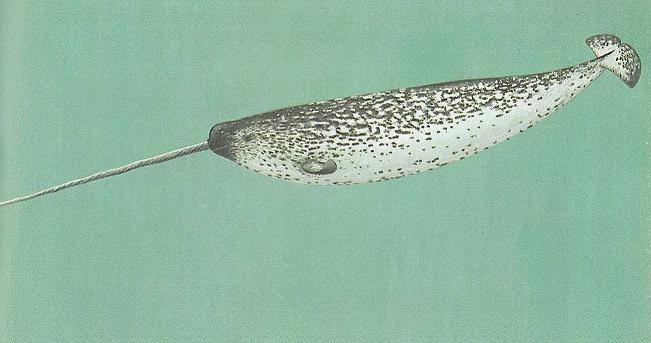
The mysterious narwhal. |

The tooth, or tusk, is used for fighting. |
I hope this “whet your appetite” about life in the Arctic waters. Learn more about these amazing mammals by going to your library or checking out a website. |
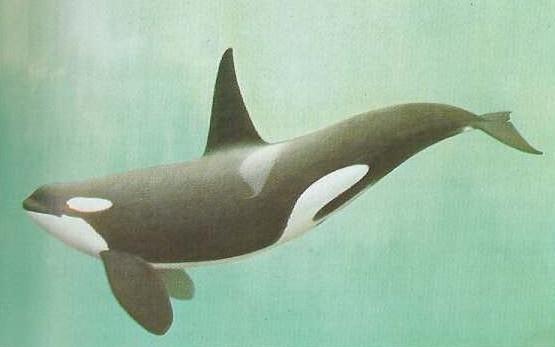
The orca is designed to swim fast. |
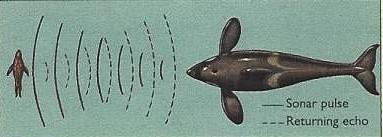
Orcas use echolocation to find and follow their prey. |
Photos from Whales and Dolphins, Sierra Club Books, San Francisco, 1992
Seals and Sirens, Sierra Club Books, San Francisco, 1992
Whale, Dolphins and Porpoises, Fog City Press, SF, 2000
Wildlife Explorer, International Masters Publishers, 1998 |
|
